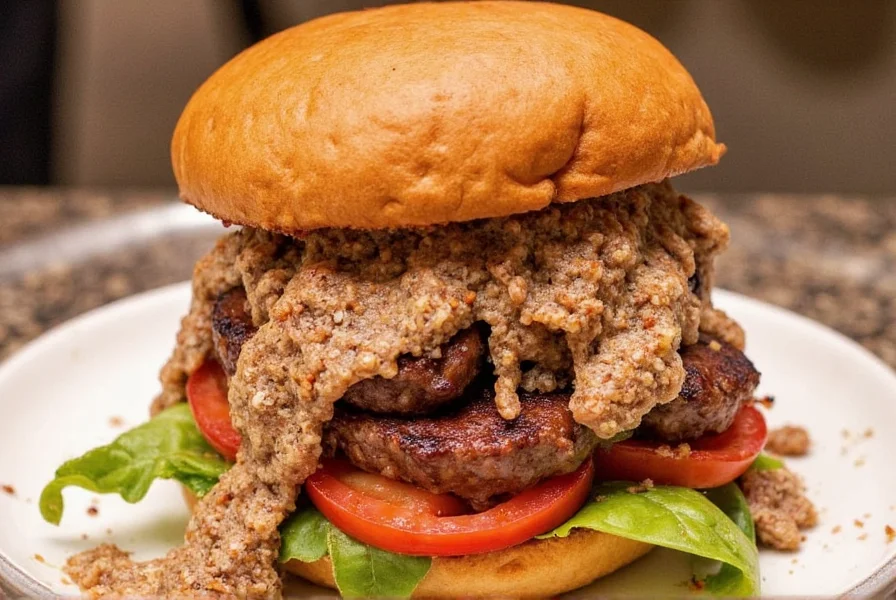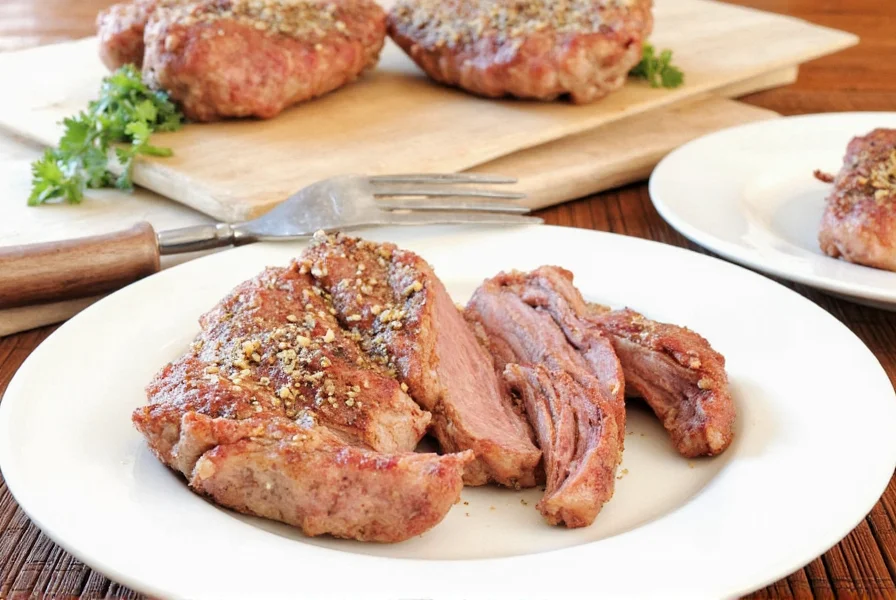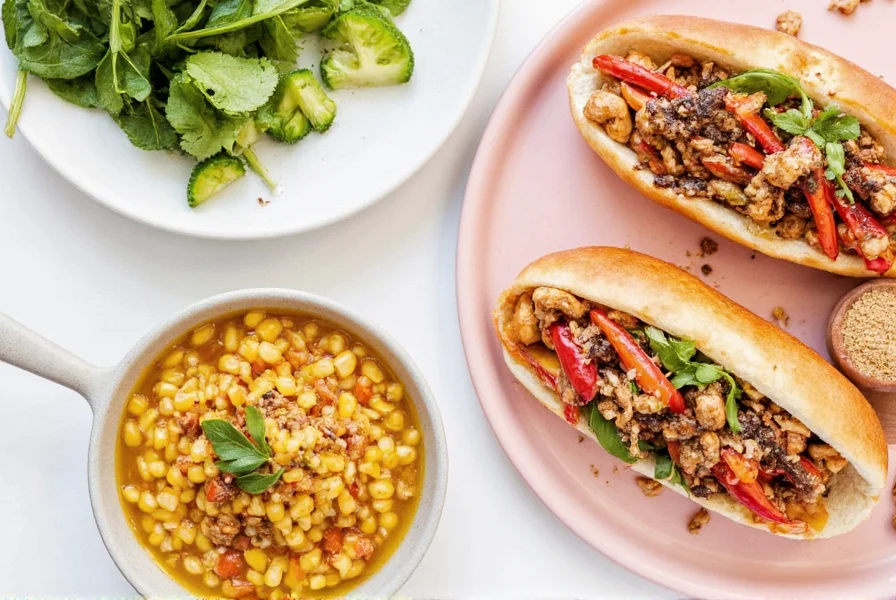Table of Contents
Introduction
Discover three simple pork seasoning recipes with exact measurements, cooking instructions, and food safety guidelines. These recipes cover pork chops, ribs, and tenderloin with step-by-step guidance for perfect results every time.
Classic BBQ Rub
Perfect for: Pulled pork, ribs, or pork shoulder
This smoky-sweet rub creates tender, flavorful meat for sandwiches or tacos. Follow USDA guidelines for safe cooking temperatures.
- 1/4 cup brown sugar
- 2 tablespoons paprika
- 1 tablespoon garlic powder
- 1 tablespoon onion powder
- 1 tablespoon ground cumin
- 1 teaspoon black pepper
- 1 teaspoon salt
Instructions:
- Mix all ingredients in a bowl until uniform
- Rub mixture onto 3-4 lbs of pork shoulder (1 tsp per pound)
- Refrigerate for 2-4 hours (or overnight for deeper flavor)
- Cook at 225°F (107°C) for 6-8 hours until internal temperature reaches 195°F (90°C)
- Rest 15 minutes before shredding

Herb & Garlic Glaze
Perfect for: Pork chops, tenderloin, or loin roast
This fresh herb glaze creates a crispy exterior while keeping meat juicy. Ideal for weeknight dinners.
- 2 tablespoons olive oil
- 3 cloves garlic, minced
- 1 tablespoon fresh thyme (or 1 tsp dried)
- 1 tablespoon fresh rosemary, chopped
- 1 teaspoon salt
- 1/2 teaspoon black pepper
Instructions:
- Combine all ingredients in a bowl
- Pat pork chops (1-inch thick) dry with paper towels
- Coat chops evenly with glaze and refrigerate 30 minutes
- Preheat oven to 400°F (204°C)
- Bake for 15-18 minutes until internal temperature reaches 145°F (63°C)
- Rest 5 minutes before serving

Spicy Korean Style Rub
Perfect for: Pork belly, ribs, or stir-fry
This sweet-spicy marinade delivers authentic Korean flavors with quick preparation. Safe for all pork cuts.
- 1 tablespoon gochujang (Korean chili paste)
- 1 tablespoon soy sauce
- 1 tablespoon rice wine vinegar
- 1 tablespoon sesame oil
- 1 teaspoon garlic powder
- 1 teaspoon ginger powder
- 1 teaspoon honey
Instructions:
- Whisk all ingredients into smooth paste
- Marinate 1 lb pork belly slices for 1-2 hours
- Preheat skillet over medium-high heat
- Cook 3-4 minutes per side until internal temperature reaches 145°F (63°C)
- Top with sesame seeds and sliced green onions

Spice Basics for Pork
Understanding spice properties ensures balanced flavors and food safety:
- Paprika: Smoked varieties add depth for slow-cooked dishes; sweet for delicate cuts
- Cumin: Use sparingly (1/2 tsp per lb) to avoid overpowering pork
- Garlic/Onion Powder: 1 tsp per lb is ideal for most cuts
- Salt: 1/2 tsp per lb maximum to prevent drying
- Food Safety Note: Always cook pork to minimum 145°F (63°C) internal temperature per USDA guidelines
Practical Tips for Seasoning Pork
- Marinate times: Chops (30 min), Tenderloin (1-2 hrs), Shoulder (4-24 hrs)
- Pat meat dry before applying rubs for better adhesion
- Use digital thermometer to verify safe cooking temperatures
- Rest meat 5-15 minutes after cooking for juicier results
- Store spices in dark, cool places to maintain potency
| Spice | Best Use Case | Amount per lb Pork | Storage Tip |
|---|---|---|---|
| Paprika | Grilled or smoked pork | 1-2 tsp | Airtight container away from light |
| Garlic Powder | Roasts or chops | 1 tsp | Refrigerate after opening |
| Cumin | Slow-cooked dishes | 1/2 tsp | Use within 6 months |
| Dried Thyme | Herb-based glazes | 1 tsp | Store in glass jars |
Frequently Asked Questions
What's the safest internal temperature for cooked pork?
According to USDA guidelines, cook pork to a minimum internal temperature of 145°F (63°C) followed by a 3-minute rest period. Use a digital meat thermometer for accuracy.
Can I use fresh vs dried herbs interchangeably?
Yes, but adjust quantities: 1 part dried = 3 parts fresh. For example, 1 tsp dried thyme = 1 tbsp fresh thyme. Add fresh herbs near the end of cooking to preserve flavor.
How do I prevent pork from drying out?
1) Use marinades with acid (vinegar, citrus) for tenderizing 2) Don't overcook - remove at 145°F 3) Rest meat before slicing 4) For lean cuts like tenderloin, brine for 1 hour before seasoning
Why does my seasoning fall off during cooking?
Pat meat completely dry before applying rubs. For wet marinades, ensure proper adhesion by massaging into meat. For dry rubs, lightly oil the surface before applying spices.
What's the best way to store homemade spice blends?
Store in airtight glass containers away from heat and light. Most blends last 6-12 months. Label with creation date. Avoid storing sugar-based blends in humid environments to prevent clumping.
Conclusion
Mastering pork seasoning starts with understanding meat cuts, proper measurements, and food safety practices. These three recipes provide versatile options for any occasion while following USDA cooking guidelines. Remember: precise temperatures, proper resting times, and quality spices transform ordinary pork into restaurant-quality meals.











 浙公网安备
33010002000092号
浙公网安备
33010002000092号 浙B2-20120091-4
浙B2-20120091-4